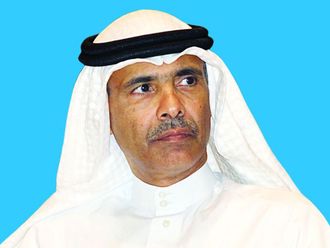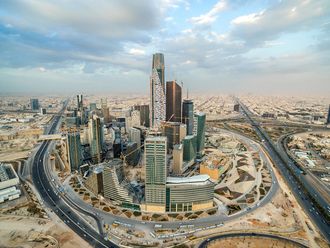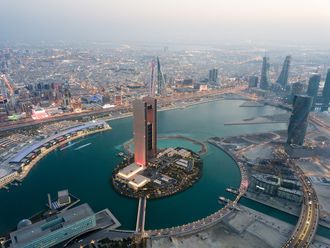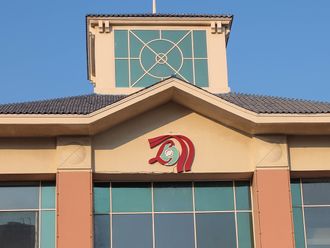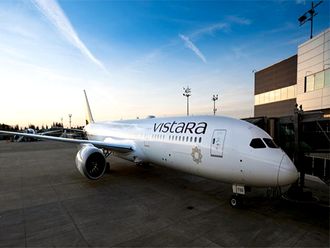
The Arab adage "the beginning of a torrent is few drops" is equally true in renewable energy development in our region.
The modest development of solar energy in the Arab countries is destined to pick up speed with the news from Saudi Arabia, which is "planning an investment of at least $100 billion (Dh367 billion) into clean energy resources over the next decade including a target to achieve 5 gigawatts (GW) of solar-generated power".
Oil Minister Ali Al Naimi recently said: "Saudi Arabia, the world's largest oil exporter, has the potential by 2020 to produce enough solar power to meet more than four times global demand for electricity."
While this may be too optimistic it does declare an intention not to miss on an equally important resource as the Saudi petroleum.
The move to solar energy is prompted not just by the desire to preserve the environment, but by the high growth rates of energy consumption which is eating into Saudi Arabia's ability to stay ahead as a leading oil exporter. Total oil consumption there is close to two million barrels a day, almost a quarter of its production. Gas consumption is nearly equivalent to 1.2 million barrels a day and is not expected to increase a great deal due to limitation of gas resources.
Fuel mix
Saudi Arabian demand for electricity is growing at around 5 per cent annually and direct use of crude oil is a feature of the fuel mix there.
In a recent announcement, Abdul Salam Al Yamani, head of the Saudi Electricity Company, set off alarms to warn that oil in his country could be depleted by 2030 if domestic consumption is left unchecked. And Aramco chief Khalid Al Falih warned that national energy demand would more than double to 8.3 million barrels of oil equivalent in 2028 from 3.4 million barrels in 2009. The current electricity generation capacity of about 45GW is likely to increase to 75GW by 2018 and to more than 120GW by 2030, according to Abdullah Al Shehri, governor of the Electricity and Co-Generation Regulatory Authority in Saudi Arabia.
With these alarming forecasts, it is no wonder that Saudi Arabia will go full throttle ahead with deployment of renewable energy to give longevity to its oil exports which are the main financing resource of its development.
Saudi Arabia aspires to export solar electricity to neighbouring countries and even international markets given the advances in efficient electricity transmission.
Of course, Saudi Arabia with its wide desert area may achieve a great degree of what it aspires to by using concentrated solar energy which has been developed especially in the US, where plants of 1,000 megawatts are being built.
But the Saudis have to plan on a long term basis, setting the legal framework to attract investors, the state support or subsidy and using the latest advancements in solar technology.
The Saudis may find it practical to start supplying remote areas which are not connected to the grid before moving into large scale systems. This will give them time to understand implications and learn from the process where certain research is needed to mitigate the dust effect and improve efficiency.
Other countries in the Arab world may have moved even before Saudi Arabia such as the Masdar project in the UAE and Egypt's official target to increase the contribution of renewable energy to 20 per cent by 2020 and last year it completed a 140MW solar plant, the first in the country and a 100 MW plant is planned. In Morocco, a 500MW solar plant is under construction for electricity export to Europe and the country is targeting 2,000MW by 2020. Similar effort is in Algeria where a 150MW solar plant will be enhanced with gas firing turbines to ensure continuity of generation with eventually much larger plants for export to Europe.
European countries are supportive, not only because they export technology and equipment, but because they see it as a way to fight climate change and help Europe meet its renewable energy targets and recently by the fear generated by the Fukushima nuclear disaster. The IEA says that "the technical potential of the Middle East and North Africa (Mena) is more than a hundred times the total current electricity consumption of the Mena and European regions together."
Solar energy
One estimate suggests that solar electricity capacity will by 2050 be 1,500GW supplying the equivalent of 670 million tonnes of oil equivalent electricity or about 14 million barrels a day.
In 1973, I was told by an unsympathetic European that it is unfortunate when oil is finished, the Arabs will still be the richest in solar energy. Time to face the music.
The writer is former head of the Energy Studies Department in Opec Secretariat in Vienna.




